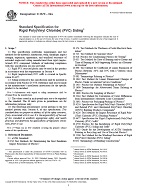1.1 This guide for characterizing collagen-containing biomaterials is intended to provide characteristics, properties, and test methods for use by producers, manufacturers, and researchers to more clearly identify the specific collagen materials used. With greater than 20 types of collagen and the different properties of each, a single document would be cumbersome. This guide will focus on the characterization of Type I collagen, which is the most abundant collagen in mammals, especially in skin and bone. Collagen isolated from these sources may contain other types of collagen, for example, Type III and Type V. This guide does not provide specific parameters for any collagen product or mix of products or the acceptability of those products for the intended use. The collagen may be from any source including, but not limited to, animal or cadaveric sources, human cell culture, or recombinant sources. The biological, immunological, or toxicological properties of the collagen may vary, depending on the source material. The properties of the collagen prepared from each of the above sources must be thoroughly investigated, as the changes in the collagen properties as a function of source materials is not thoroughly understood. This guide is intended to focus on purified Type I collagen as a starting material for surgical implants and substrates for tissue engineered medical products (TEMPs); some methods may not be applicable for gelatin or tissue implants. This guide may serve as a template for characterization of other types of collagen.
Product Details
- Published:
- 09/01/2019
- Number of Pages:
- 14
- File Size:
- 1 file , 170 KB
- Redline File Size:
- 2 files , 310 KB


